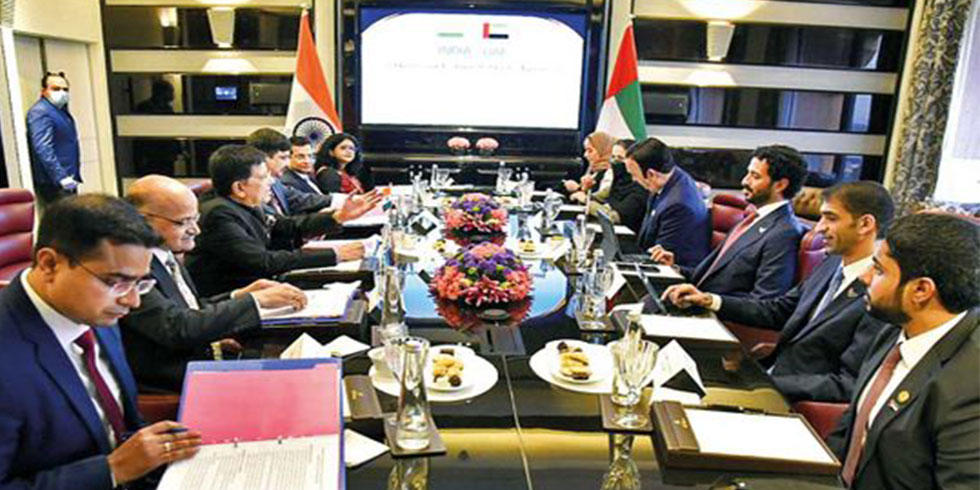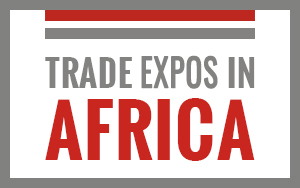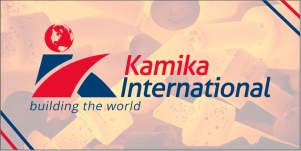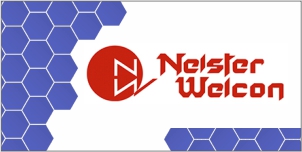Among the world’s biggest manufacturers of furniture fittings, Hettich recently announced a Rs 500-crore, 5-year investment plan for manufacturing in India. The global brand made its debut in the wire baskets segment for modular kitchens when it inaugurated its Rs 100-crore, state-of-the-art production facility outside Vadodara (Gujarat) on 27 September this year.
This product will be sold all over the world, notably in the South Asian and Middle Eastern markets. Although Hettich has a global turnover of more than US$ 1.2 billion, a presence in 110 countries and 39 subsidiaries, its India venture is the largest outside Germany: a clear indication of India’s market
potential and techno-managerial skills for manufacturing select products for global consumption.
In an interview with Dhananjay Sardeshpande, the Chairman of the Board of Directors of Hettich Holding GmbH & Co.,Dr. Andreas Hettich, explained the special attraction that India holds for the German family-owned global business and its growing interests here! Excerpts:
You recently inaugurated your stainless steel basket plant in Vadodara, set up at a cost of Rs. 100 crore. Tell us more about it.
Each of our plants worldwide specialises in a product, or a set of products. The aim is to manufacture perfect products. Scales of economy demand that each such plant caters to a global market. In Vadodara, we have set up a factory that will manufacture stainless steel wire baskets for kitchens. These will be sold in India and also exported mainly to South Asia and West Asia markets. We have an installed capacity of 2,000 baskets per day and production can be further scaled up as per demand, because we have the requisite infrastructure and space in place for expansion.
What other areas of manufacturing will Hettich bring to India over the next five years?
We have enough space for adding factories for manufacturing other products, here in Vadodara. Work is already underway on additional projects. You can look forward to another factory, up and running within the next couple of years.
Hettich already has a presence in 110 countries. India is your largest subsidiary outside Germany. What makes you believe in this nascent market?
The average per capita consumption of furniture in Europe is vastly higher than in India. However, the European market is nearly stagnant. On the other hand, India is a growing market: it has a large population and income levels are rising exponentially. The size of the Indian market is Rs 3,500 crore for furniture fittings alone, and it is growing at a rate of 15% annually.
From imports to production: why does India inspire your confidence to invest?
When Hettich began operations in India 13 years ago, we decided at that point to look into manufacturing at the appropriate time, but first we had to create a market for us and grow the sales. In the past decade, Hettich has seen 41% growth in India and we foresee no less than 20% growth in the years to come.
Moreover, the ease of dealing with the government and the favourable investment climate in India is what clinched the decision in favour of setting up a manufacturing hub here.
Apart from acting as a manufacturing hub, does India have the talent and infrastructure for R&D and design tasks?
Wherever Hettich sets up manufacturing hubs for specific products – be it in Spain, the US, China or the Czech Republic – we encourage in-house research and development. It is a package of R&D, design, manufacturing and marketing. We invest upward of Rs 250 crore annually on R&D alone. The cumulative aim of the effort is to combine performance, aesthetics and efficient use of space.
How has the experience been with your joint venture partner?
India has been a very dynamic market, with socio-economic changes that would escape the grasp of many European entities. Our joint venture has ensured that we have on board people with experience in the industry and a very good understanding of the market. We understand each other very well, and that has paid handsome dividends.
What have been the challenges to good business operations here?
Addressing the fragmented market is no cakewalk. We are constantly on our toes to align our strategies to the pace of socio-economic changes. These are not deterrents to business; these are healthy challenges. The recent fluctuation of the Indian currency vis-a-vis the US dollar and the Euro is another challenge.
Can you explain your B2B2C model?
Good fittings are at the heart of good furniture: that is the message we are taking to the furniture industry here. We are investing substantially to develop the market. Hettich has been training 2,000 carpenters in India each year. We have also opened a furniture design cell for the benefit of our business partners.
Hettich was the first to open six application centers in India, where we invite carpenters, interior designers and architects – even end consumers – to see, touch and feel our products. We have demonstrations of our products and systems at the centers to help them understand their operation and utility.
Are there immediate plans to expand your network of application centers (Mumbai, New Delhi, Chennai, Kolkata, Bangalore & Hyderabad) in India?
Yes! We are opening more of our application centers, in a couple of months beginning with Ahmedabad. We plan to expand our presence to all state capitals, and other important towns.
Hettich supplies to brands such as Ikea, Nobilia, Nolte, Siemens and Electrolux. Why do you think India doesn’t have a globally known brand of its own?
China is driven by mass production in the organized sector, but is not strong on design capacities. This is not the case in India, where a large chunk of the furniture industry is in the unorganized sector. It is true that India has no dominant players in the market yet. But, like I said before, the industry and market are in the process of maturing.
You cater to all three segments: office, residential and kitchen & bath, for which you have more than 10,000 products to sell, spanning all budgets. How does Hettich differentiate, segregate, focus, integrate and coordinate business?
Our core product categories are hinges, runners, drawers and sliding doors. These have worldwide applications and satisfy different demands. For additional solutions we offer additional options. So it isn’t really such a difficult job!
The durability of all our products remains constant across various pricing points. What differs is the technology behind them: tried and tested technology can be offered at a lower price, whereas cutting-edge innovation commands a premium.
You have said that the quality of Hettich products is hidden to serve the larger purpose of furniture. With your brand recognition are there plans to diversify – say into office and home appliances?
Each of our products has a long value chain. From metal working and plastics (raw material) to die-casting and extrusion (technology), from perfect machining to finishing (process), each is a specialization in itself.
The thinking in Hettich is driven by the minds of engineers. Throughout our 125-year history, we have concentrated on furniture fittings. We would rather be known for our innovation and retain the leading edge than diversify into something like appliances that go with furniture. Our promise to the market – of offering the highest quality and design – needs to stand up to the test time and again.
Indian furniture industry is maturing, feels Dr. Andreas Hettich














Add Comment